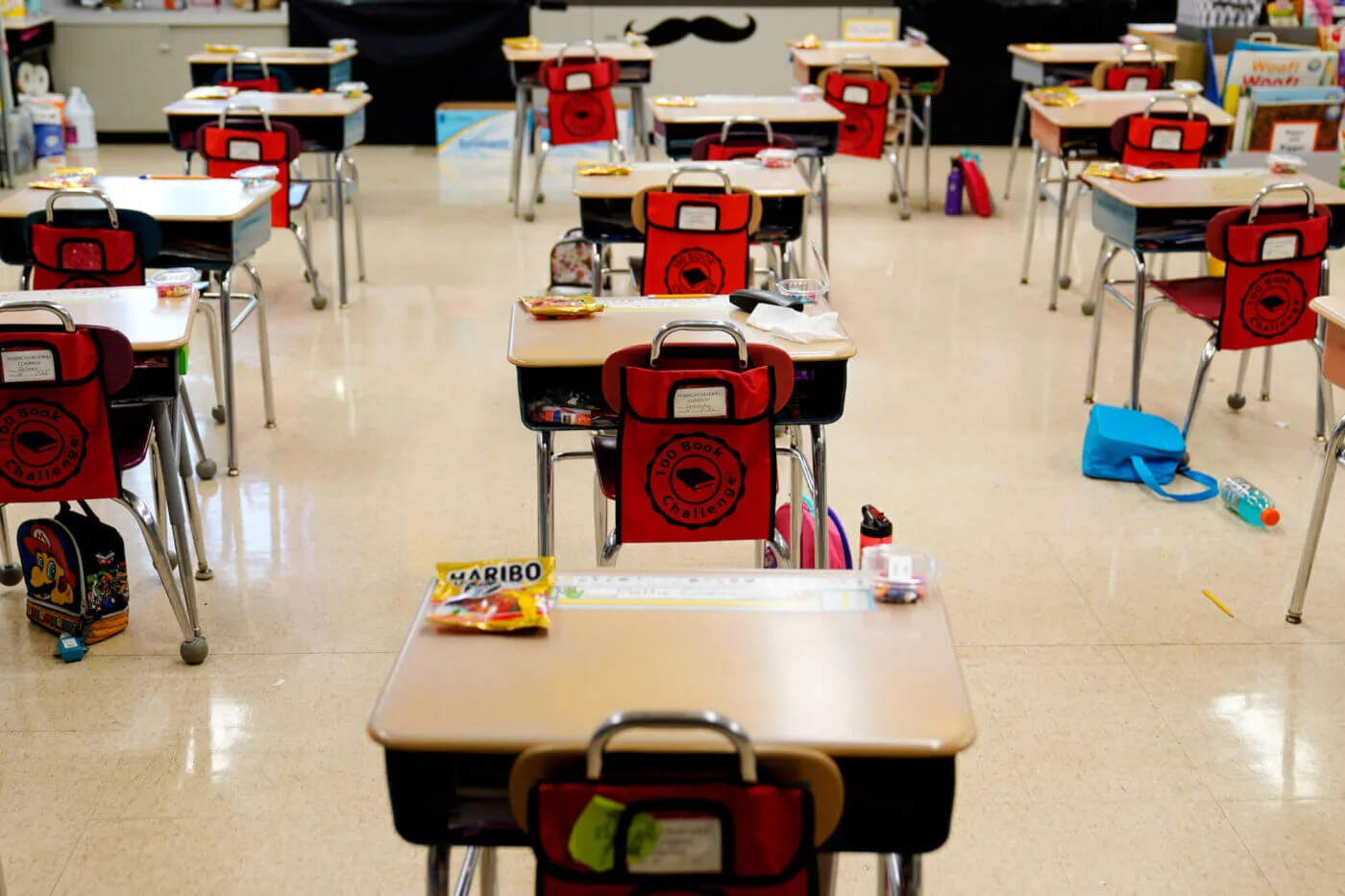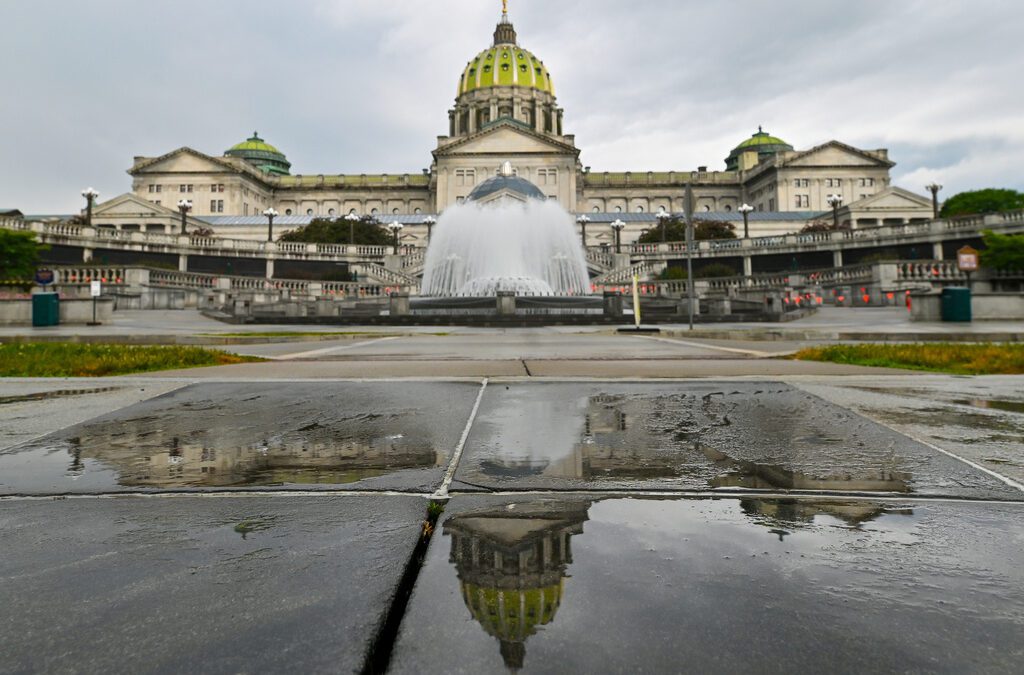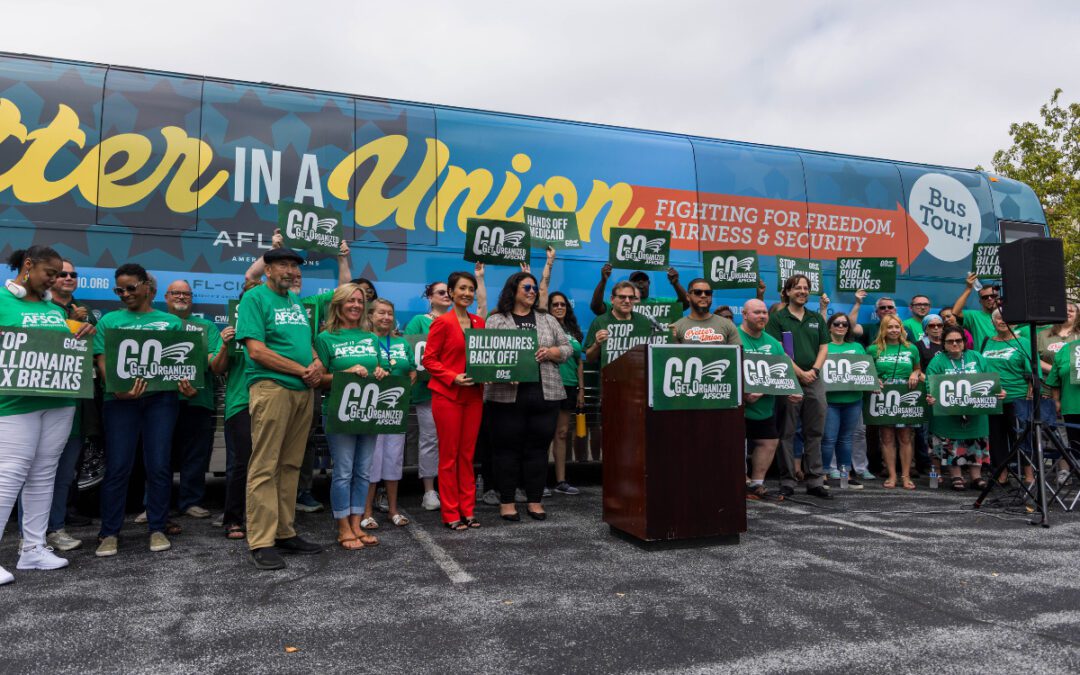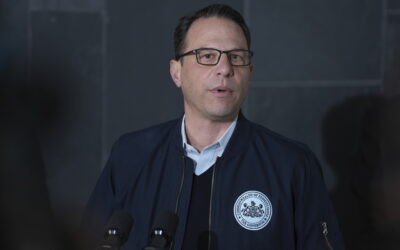
Desks are arranged in a classroom at Panther Valley Elementary School, Thursday, March 11, 2021, in Nesquehoning, Pa. (AP Photo/Matt Slocum)
When students are unable to meet their basic everyday needs, their capacity to learn is fundamentally impaired.
My 8th-grade student, Juan, shuffled into class on a chilly fall day that smelled of damp earth and dying leaves. He wore a Pokémon blanket clutched tight around his small shoulders, a heartbreaking substitute for a warm coat. His classmate Jenny told me she was hungry five times that day, her tight, dark spiral curls bouncing with almost painful, high-energy animation. My eyes fill with tears thinking about my district’s emergency food and clothing drive, a stark white flyer about it hanging near our classroom.
Meanwhile, at the Pennsylvania State Capitol, about 80 miles away from where I teach, the more than four-month budget impasse waged on. While the budget was finally approved by the legislature and signed by the governor earlier this month, its delay left programs that directly impact the Juans and Jennys in my classroom hanging precariously in the balance.
In Pennsylvania, districts burdened by adequacy funding gaps, poverty isn’t an abstract concept—it’s the daily reality for 70% of enrolled students. In July 2024, the Pennsylvania General Assembly delivered a landmark, bipartisan solution by codifying a new methodology for calculating the state’s obligation to underfunded districts and integrating it into the 2024-25 state budget. In my home district, that alarming figure swelled to 77%.
Then there’s the higher percentage of homelessness and dropout rates as well as larger teacher-to-student ratios. For these under-resourced schools, the recent protracted budget process wasn’t a slowdown; it was a gut-wrenching roller coaster ride through financial instability. Some districts were forced to take out high-interest loans, deepening their debt.
Schools should be vibrant, community-resource hubs, but the lack of funding has actively shredded that safety net. Crucial programs vanished when districts were forced to unplug vital after-school tutoring and clubs, silencing key opportunities for academic support and enrichment. Community engagement, which keeps families connected and supported, was sacrificed as schools abandoned community events.
Yet, a sharp ache of uncertainty remains: What happens when the inevitable budget battle resumes next year, threatening to dismantle this critical lifeline? The fight is not truly over until this commitment to equity is codified permanently. While this funding crisis is familiar, the urgency to deliver a lasting solution has never been greater.
A delayed budget cripples underfunded schools. The lack of timely funding could force students like Jenny to battle hunger as they try to learn. Imagine her struggle: her mind, which should be analyzing history or solving an algebra problem, is instead preoccupied with the sharp, gnawing distraction of an empty stomach. As her teacher, this reality forces difficult decisions: Do I invest in vibrant classroom materials that make my classroom warm and inviting, or do I sacrifice those extras to ensure there is a crucial stash of emergency food for Jenny and others like her, helping them achieve the most basic level of needs?
If a budget were finalized by July, the support systems it funds would be in place early enough to protect students like Juan. This timely start would allow him to build a trusting relationship with his after-school program teacher, enabling him to share his need for a coat well before the early November frost turns the grass brown. Consequently, his cherished Pokémon blanket could stay where it belongs—on his bed—instead of being dragged along the cold, dirty sidewalks on his way to school.
Timely funding is a crucial lifeline for students like Jenny and Juan, a point I urge Pennsylvania lawmakers to keep at the forefront of their minds in the years ahead.
Now that school districts are funded for the 2025-2026 school year and the federal government is reopened, students like Jenny can receive breakfast and lunch, filling their stomachs with nourishment so they can focus on learning. Similarly, students like Juan will be able to connect with teachers and mentors they might not otherwise encounter, establishing safe spaces to share deeply personal burdens that no child should have to carry alone.
I applaud state legislators for their commitment to closing the adequacy gap on behalf of our most marginalized learners and their adherence to the court mandate issued by Judge Renée Cohn Jubelirer. However, I implore them to remember that the state budget represents much more than dollars and cents; it is a foundational investment in basic needs, cultivating equitable learning environments, and setting students up for success across all of Pennsylvania.

Plan to help domestic violence victims collect unemployment frozen in the Pa. Senate – again
A bill to help domestic violence victims collect unemployment benefits if they have to leave their job over safety concerns has stalled in the state...

Senate Republican budget plan draws criticism from Democrats, as ‘unserious’
The state Senate passed a new $47.9 billion budget proposal Tuesday as Democrats warned of the consequences of not fully funding schools and social...

House Democrats send new budget proposal to Senate on 100th day of impasse in Pennsylvania
Senate Republican leaders said they couldn’t vote on the plan without more time to examine changes. In the first public action in nearly two months...

County workers face furlough notices as Pennsylvania’s budget stalemate drags on
With no end in sight to the ongoing budget stalemate, county workers and contractors who rely on state funding have begun receiving furlough...

Pennsylvania agencies warn of mounting damage as state enters its 4th month of a budget stalemate
Pennsylvania's counties, school districts and social service agencies are warning of mounting layoffs, borrowing costs and damage to the state’s...





